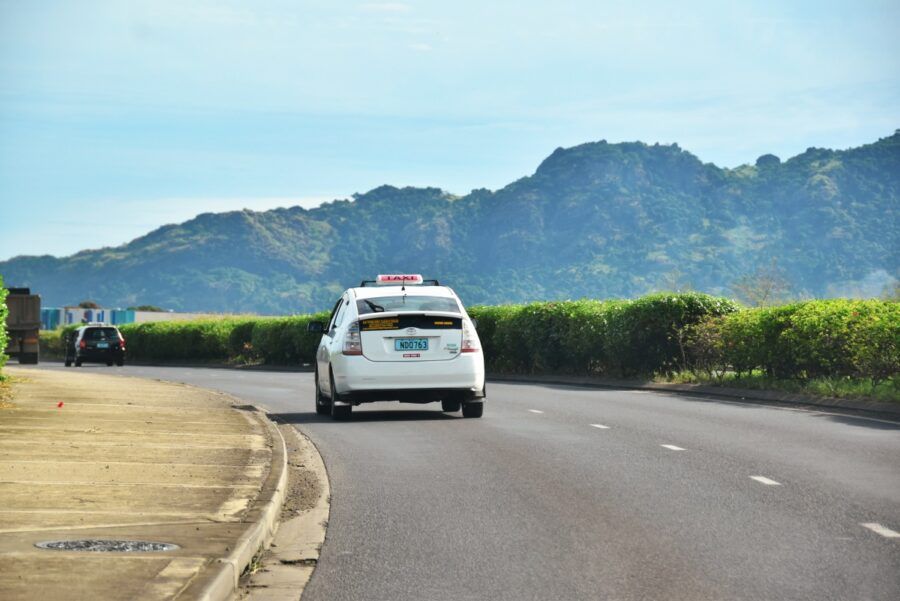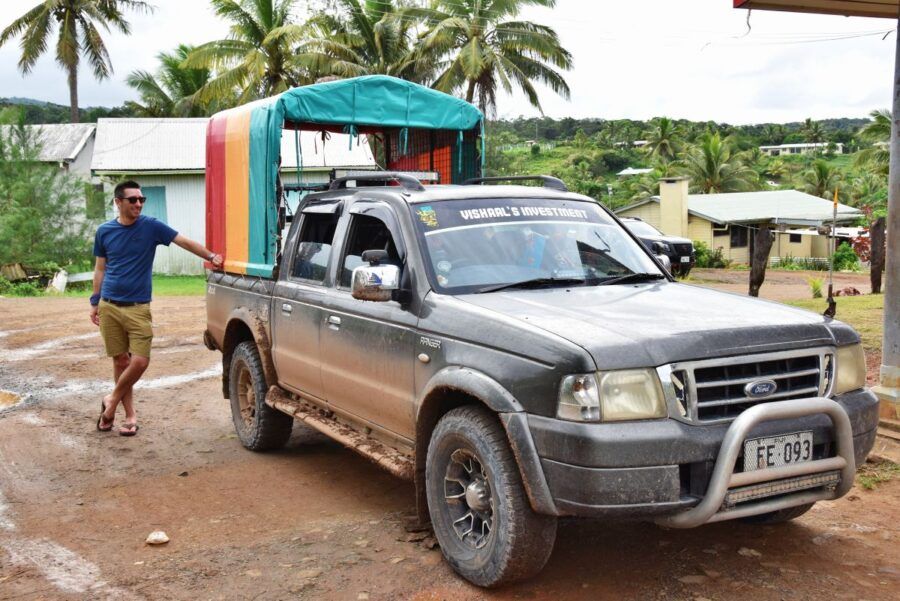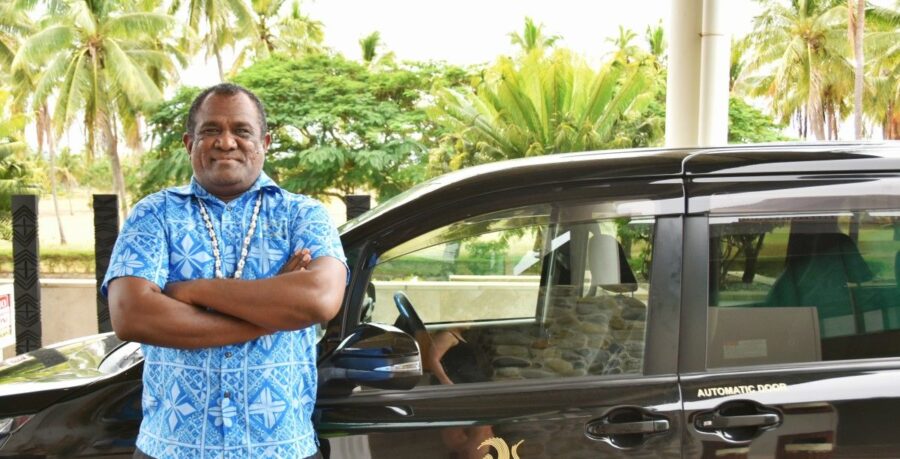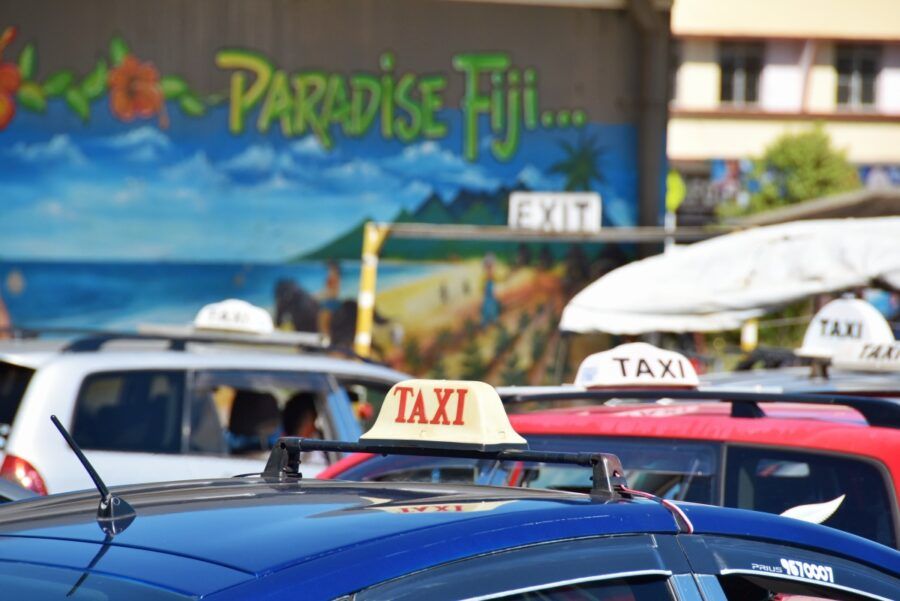What Are the Public Transportation Options in Fiji?
While many holidaymakers flock to Fiji to stay in a resort for the whole week, many of us wish to explore more of the country and experience the real side of Fiji. A great way to do that while sticking to a budget is to use public transport in Fiji. On land, Fiji’s main islands have an expansive network of roads making travelling by bus or taxi a breeze. When it comes to island-hopping you have more options, from domestic flights to passenger ferries to even adventurous voyages on cargo boats. Travelling by public transport allows travellers to experience the Fijian way of life firsthand, making for an interesting addition to your trip to Fiji.
While this article will go through all the public transportation options in Fiji, be sure to check out our other articles, such as How to Get Around Fiji, for more information.
Table of Contents
5 Tips for Using Public Transport in Fiji
Before we get into our public transportation guide to Fiji, here are a few quick tips from the travel team at Fiji Pocket Guide.
- The local buses are the cheapest way to get around on land.
- Buses require passengers to purchase eTransport Cards – see How to Book & Pay for Bus Transport in Fiji? to learn more.
- Cargo and passenger ferries are the cheapest way to get between the islands.
- Taxis can be a cost-effective way of getting around a town or city.
- Carriers and minivans are among some of the most local and cheapest ways to get between towns or explore inland.
And to see all of your options for travelling across Fiji, be sure to check out the Fiji Transport Guide: 20 Best Ways to Get Around Fiji.
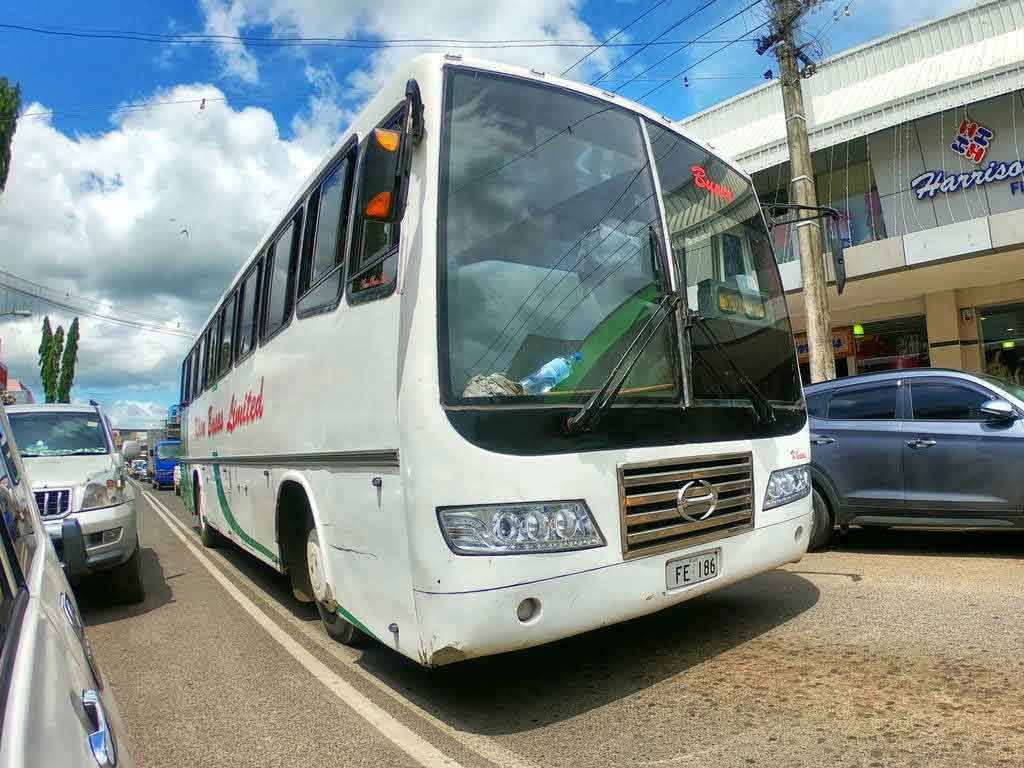 © FijiPocketGuide.com
© FijiPocketGuide.comBuses in Fiji
With around 95% of Fiji’s roads being on Viti Levu and Vanua Levu, buses are the most practical method of public transport to get around the main islands of Fiji. It’s also a cheap way to get around Fiji. Local buses operate around towns and cities, taking passengers just about anywhere in the district. Buses are old, have cushioned seats, and some have open-air windows where you will have canvas shutters to close if it is raining. Many travellers see it as a fun local experience.
Express buses operate between Fiji’s towns and cities, which run to a schedule, often getting passengers between Nadi and Suva in under six hours. Express buses are air-conditioned, with all of them having windows and comfortable coach seats. Some may even play a movie for long-distance trips.
Both local buses and express buses work on an e-ticket system where disposable eTransport cards can be bought from the driver in exchange for cash – find out more in Where to Book Bus Transport in Fiji?
For a complete guide on how buses work in Fiji, head to our guide, How to Travel Around Fiji by Bus.
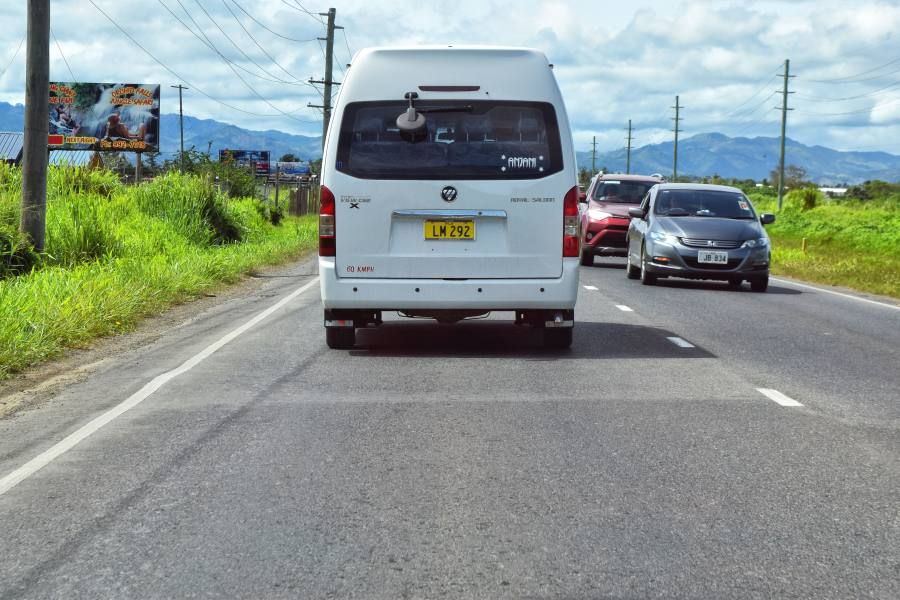 © FijiPocketGuide.com
© FijiPocketGuide.comMinivans and Carriers
10-seater minivans also operate in the town centres of Fiji, stopping by the roadside to pick passengers up. These are usually the same price or cheaper than a bus fare but get passengers to their destination quickly. However, some operate illegally and drive a little recklessly, so look out for “LM” license plates to make sure they are licensed.
Alternatively, there are carriers which are 4WD pick-up trucks (utes) with an open back covered by a tarpaulin and two wooden benches on either side. This is a public transport option that locals like to use when getting between the cities and rural villages.
Learn more about this transport method in Minivans & Carrier Vans in Fiji: What You Need to Know.
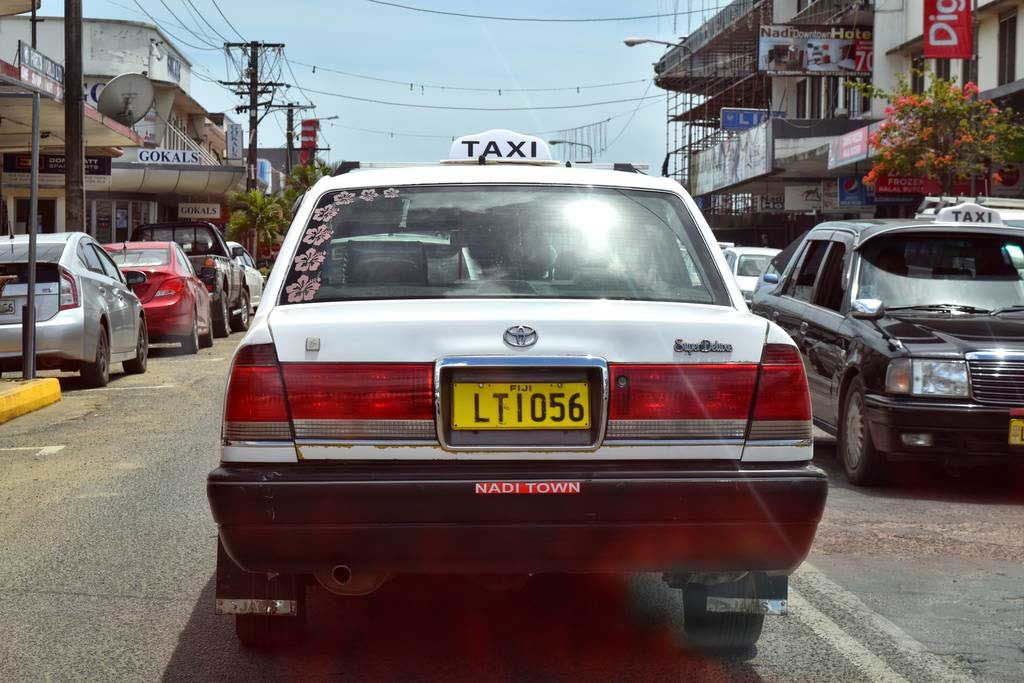 © FijiPocketGuide.com
© FijiPocketGuide.comTaxis in Fiji
Taxis are a good way to get from A to B quickly. Taxis with “LT”, “ND” or “LK” license plates are affordable, as taxi fares are regulated by the government. You can find taxis on the islands of Viti Levu, Vanua Levu, Taveuni, Ovalau and Kadavu.
Taxis are also a good option for getting between towns or doing some rural drives, for example, driving between attractions in a rural area like the Garden of the Sleeping Giant and the Sebato Hot Pools in Nadi. For these types of trips, make sure to negotiate a price first.
There’s a lot to go into when it comes to taxis and their similar counterparts, tour and transfer companies, so check out The Guide to Taxis in Fiji: LT Vs. LH Plates, How to Use & More to learn more.
 © FijiPocketGuide.com
© FijiPocketGuide.comFerries and Cargo Boats
Getting between Fiji’s islands by sea is often much cheaper than taking a flight, making ferries and cargo boats a favourable option. Daily ferry services operate between the busy tourist destinations of Port Denarau on Viti Levu and the Mamanuca and Yasawa Islands. You will find some little-known and cheaper ferries also operating from Lautoka and Wailoaloa Beach.
By contrast, the cargo boats and ferries that run between Viti Levu, Kadavu, Vanua Levu, Taveuni and the Lomaiviti and Lau Group are less tourist-friendly. They have erratic schedules, which makes planning for a trip rather difficult. On these trips, you will often find yourself sharing your trip with livestock and building supplies, as the service is primarily a cargo ship.
For more information on ferries in Fiji, see our Fiji Ferry Guide: How to Use Ferries for Interisland Travel.
 © FijiPocketGuide.com
© FijiPocketGuide.comDomestic Flights in Fiji
A quick and convenient way to get between the islands is by air. There are domestic airlines flying between Nadi, Suva, Taveuni, the Lau Islands, Vanua Levu, Kadavu and a few other smaller islands. Airports are generally very basic beyond Nadi. Nevertheless, flight schedules are frequent which may just justify the higher price compared to ferry travel.
A popular and premium way to get between the Nadi area in Viti Levu and the Mamanuca and Yasawa Islands is by chartering a helicopter or seaplane. Helicopters and seaplanes can take you right to your island resort. There is often a minimum number of required passengers, usually two, for flights to be booked.
Check out Domestic Flights in Fiji: Your Guide to Interisland Flights for more information on travelling Fiji by plane, seaplane and helicopter.
More About Public Transport in Fiji
That’s it from the guide to public transport in Fiji. For more tips, take a look at the following:
Finally, check out more transport options around the islands in our Fiji Transport Guide: 20 Best Ways to Get Around Fiji.
Sources:
The information in this guide has been compiled from our extensive research, travel and experiences across Fiji and the South Pacific, accumulated over more than a decade of numerous visits to each destination. Additional sources for this guide include the following:
- Land Transport Authority (Road safety advice - Updated [2025])
- Tourism Fiji (General travel advice - Updated [2025])
- Fiji Immigration (Visa and immigration advice - Updated [2025])
- Fiji Revenue & Customs Service (Customs and visitor taxes - Updated [2025])
- Biosecurity Authority of Fiji (Biosecurity advice - Updated [2025])
- Fiji Meteorological Service (Weather forecast and warnings - Updated [2025])
- Fiji Bureau of Statistics (Statistics and travel data - Updated [2025])
- Ministry of Tourism and Civil Aviation (Tourism statistics - Updated [2025])
- SPTO (Pacific tourism advice - Updated [2025])
- Fiji Hotel and Tourism Association (Tourism trade association - Updated [2025])
- Safe Travel (New Zealand travel advisory for Fiji - Updated [2025])
- Smart Traveller (Australia travel advisory for Fiji - Updated [2025])
- Travel.State.Gov (U.S. travel advisory for Fiji - Updated [2025])
Our editorial standards: At Fiji Pocket Guide, we uphold strict editorial standards to ensure accurate and quality content.

About The Author
Laura (Lora) S.
This article was reviewed and published by Laura, editor in chief and co-founder of Fiji Pocket Guide. Since arriving solo in the South Pacific over 10 years ago with nothing but a backpack and a background in journalism, her mission has been to show the world how easy (and awesome) it is to explore a paradise such as Fiji. She knows the islands inside-out and loves sharing tips on how best to experience Fiji’s must-dos and hidden gems. Laura is also editor of several other South Pacific travel guides.



